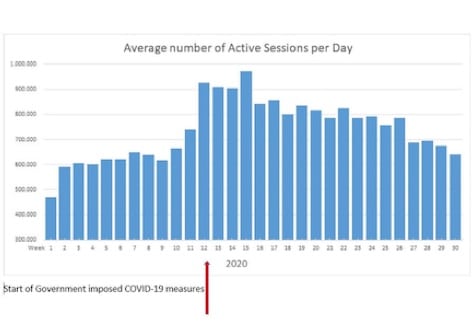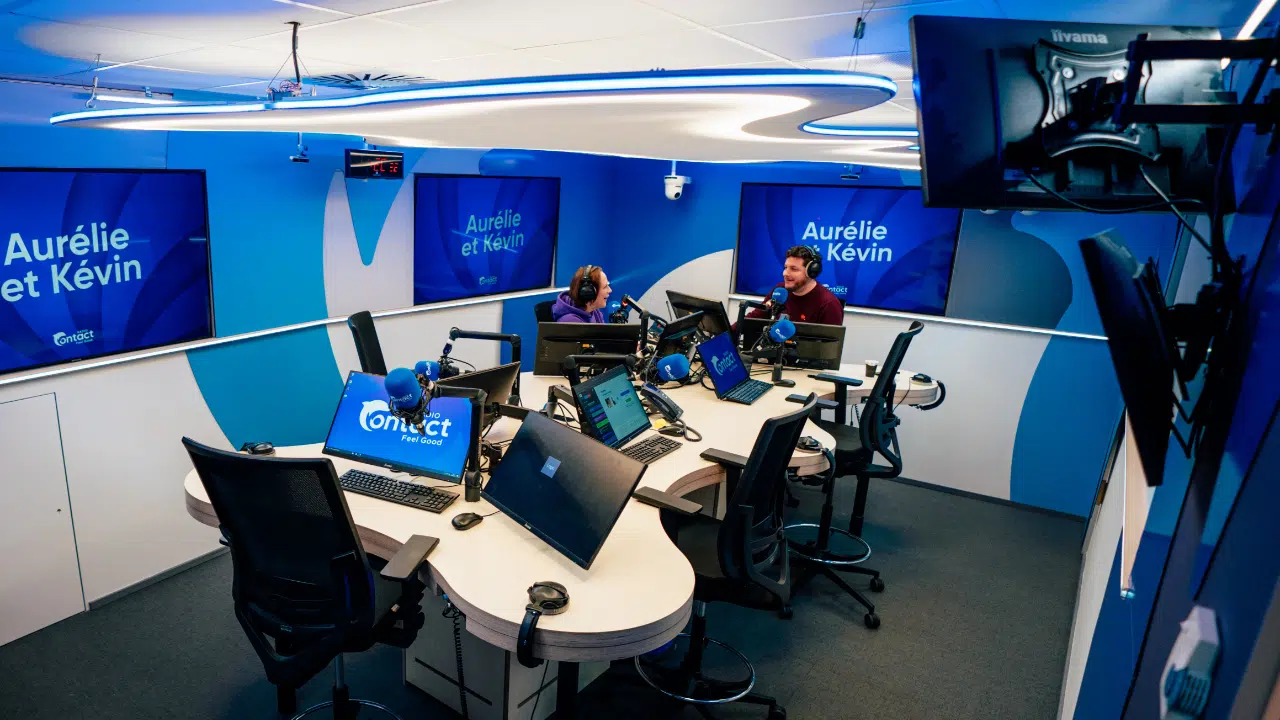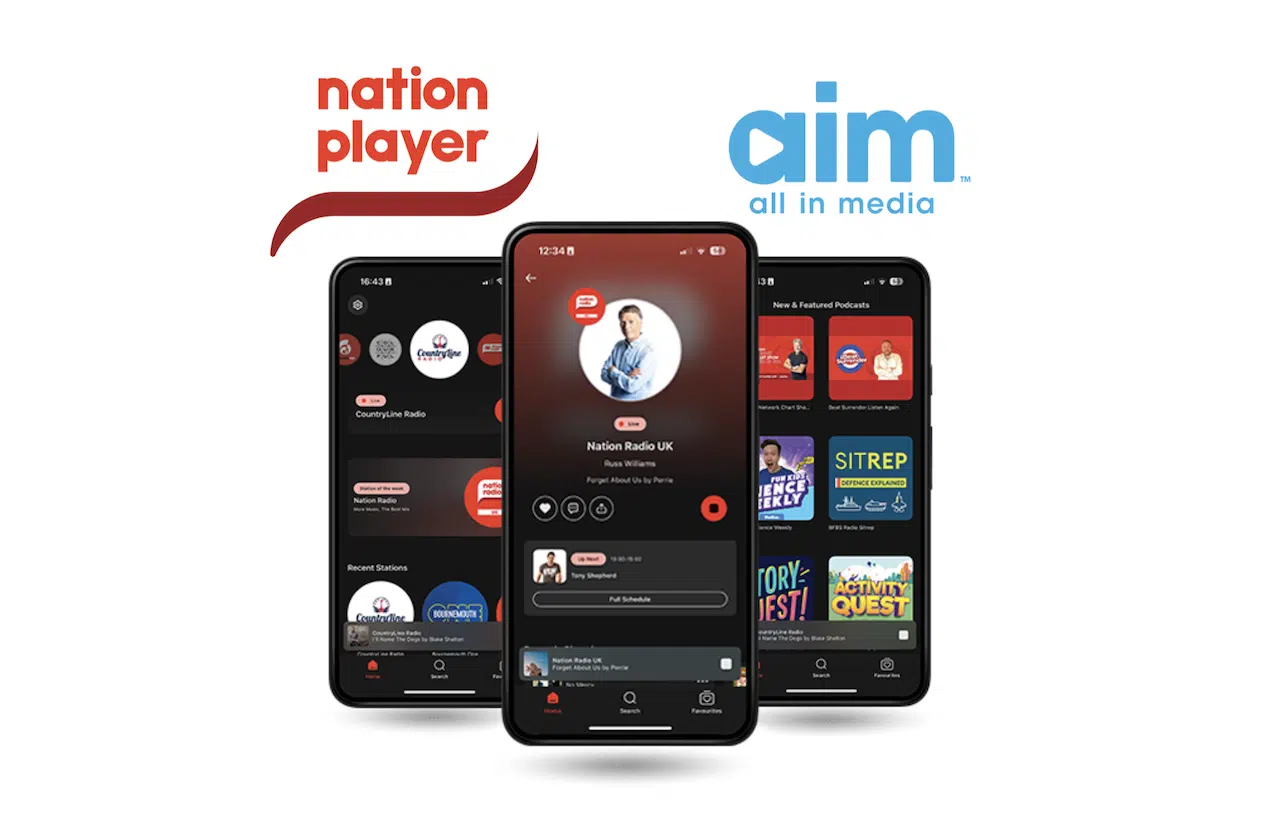

BRUSSELS — CIM [Centrum voor Informatie over de Media] began in 1971 as a joint industry committee, grouping media, advertising agencies and advertisers on a subscription basis.
CIM set up its Radio Audience Measurement (RAM) in 2002. Based on random radio diaries, the CIM RAM survey has been the country’s independent authority for ratings information for the entire radios landscape for many years. In 2016, CIM started measuring scripted audio players via a client-side log analysis as part of their CIM Internet survey, revealing online audience identification and profiles.
New Service
This year in June, CIM introduced the CIM Radio Stream Monitor. The new service focuses on online radio, monitoring listening volumes on a daily basis, and is carried out by Belgian company NeuroMedia.
“With the Radio Stream Monitor, we can measure online radio by analyzing the server logs from the participating stations in a comparative way,” said Stef Peeters, CIM general manager. “The key element in the new survey is measuring the transmission from a radio station server to a specific IP address or player. It’s quite a complex and fragile process, but the only way to give a relatively clear insight on the phenomenon of online radio.”

Peeters underlines that the Radio Stream Monitor measures audience volumes, not audience profiles. “In NeuroMedia, we found a partner with experience in audio who was capable of developing this quite unique tool,” he added.
NeuroMedia measures online streaming traffic in Belgium and abroad for the 30 participating public and private radio stations and their combined 150 digital channels. It measures radio over IP, audio via station player or app, video via station player or app, audio via aggregators like TuneIn or via Wi-Fi radios, via Smart TV browser or apps. It does not measure podcasts, streaming services like Spotify or audio on YouTube.
“The CIM Radio Stream Monitor is a remarkable project, which took us, together with CIM, two years of research and development,” said Pierre Mengal, co-founder and CEO of NeuroMedia. “Our CasterStats audience measurement software is the main engine for the new CIM survey, analyzing the data. On top of the standard version, we added custom-made features like metrics, log parsers, a multi-level data model to take in specific characteristics of the Belgian market.”
Streaming Radio

Measurement of radio over IP involves all channels (from broadcasters that allow access to their server log files) and all events (streams requested and distributed over IP). The advantage of this so-called server-side management, says the firm, is that it measures 100% of the delivered streams, independently of the receiver platform.
NeuroMedia says it collects the log file data from the stream servers on a daily basis. It then analyzes, processes and makes them accessible for subscribers on a dedicated web dashboard, with filter options per station. The company subsequently stores and publishes the results with a five-days delay to allow corrections and retrieve eventual missing logs.
Mengal adds that CIM is only using a fragment of CasterStats’ functionalities. The system doesn’t yet offer content information data about specific broadcasts or podcasts. “It goes without saying that data like audience profiles, demographic information or additional metadata could be made available for online radio,” he added. “We’re on the threshold of a new era with streaming radio, becoming the new way of broadcasting.”
Steven Van den Audenaerde, radio business development manager for DPG Media, parent of radio stations Qmusic, JOE and Willy, is optimistic about CIM’s first step to gauge the radio streaming audience. “Even if Radio Stream Monitor doesn’t provide detailed audience ratings like the ‘traditional’ CIM survey (listeners, profile), it gives insight on digital radio listening,” he commented.
Detailed Data

“When we aired the French language Top 150 countdown on JOE on July 14, we saw a significant boost of stream starts on JOE’s streaming channel on the Radio Stream Monitor. Radio makers using the tool really have a ‘finger on the pulse’ of radio. The software is very reactive in providing digital radio data.”
Van den Audenaerde added that DPG Media makes use of an ad server linked with the streaming channels to provide detailed data for commercial purposes.
“We see that online listening is gaining importance — we facilitate this through the apps of our respective stations,” said VRT Radio 1 station manager Jan Knudde. “An increasing part of the audience is using VRT radio apps — in addition people also listen to VRT via external providers such as TuneIn. The Radio Stream Monitor provides relevant information on the evolution of this growing market. Although I must add that online radio listening accounts for merely 10% of the overall listening volume. We can’t use this as an alternative for the existing CIM RAM survey.”
Radio Stream Monitor results clearly demonstrate the growth of online radio. “When we started out, internet radio was quite marginal,” explained Peeters. “But in the last months we noticed that Covid 19 gave a substantial boost in audience on top of the organic growth of online radio.”
The Future
Peeters remains optimistic about the further development of the measuring tool. “We know that the Radio Stream Monitor does not yet deliver all the information needed to become an industry currency (parameters used by sales houses to trade radio advertising). But it does give information on volumes per radio station, in Belgium and globally, allowing us to compare station audiences.”
After a period of testing, gathering comments and reactions, Peeters sees a fusion between the online radio audience measurement in the CIM internet survey and the new Radio Stream Monitor as the next logical step. “Combining the station’s server logs with the user logs will allow us to measure who is listening on a local basis,” he said. “Depending on the technological evolution of radio listening, this integrated study could eventually replace the CIM RAM diary survey.”
“The CIM Radio Stream Monitor is a worldwide pioneer,” concluded Mengal. “It’s an excellent showcase for NeuroMedia, depicting our ability to take on major assignments — we hope this will boost international interest in our business.”




















